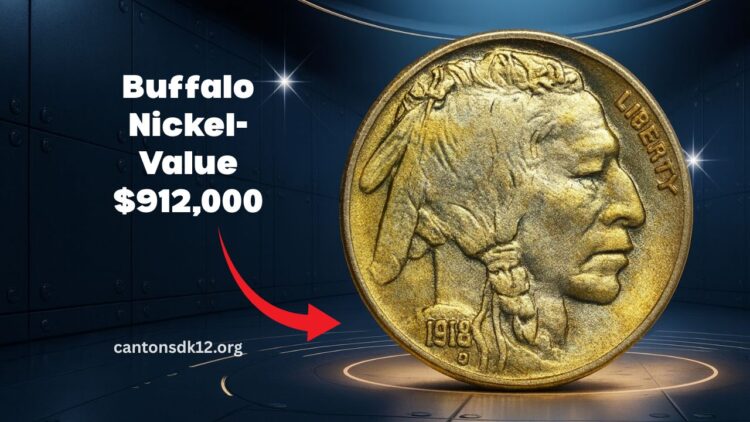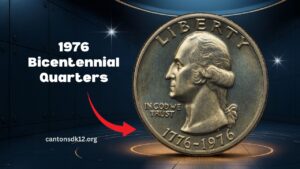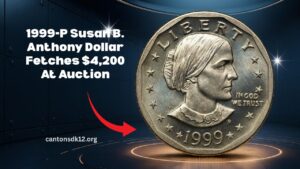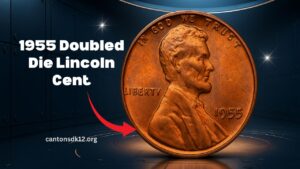A Buffalo Nickel “found in a junk drawer” still being circulated now allegedly valued at $912,000? Sounds exciting—but the truth is far less sensational.
While the Buffalo Nickel (minted 1913–1938) includes rare and valuable varieties, no verified sale has ever approached that staggering figure. In reality, the top auction records for Buffalo Nickels land in six-figure territory, not near a million.
What Buffalo Nickels Actually Sell For
Certain Buffalo Nickels—especially rare varieties in pristine condition—can command impressive prices. Strong examples include:
- 1918/7-D Overdate (Denver Mint) in top Mint State grades: around $200,000–$350,000, depending on condition.
- 1916 Doubled Die Obverse, with pronounced doubling on the date or motto: also in the $195,000–$265,000 range when graded very high.
- The legendary 1937-D “Three-Legged” Buffalo, a well-known design error, has fetched just under $100,000 in the elite MS66+ grade.
- Some 1915 Proof Buffalo coins—due to rarity and superior eye appeal—have achieved auction results nearing $240,000.
So, while six-figure prices are real—especially for premium condition rarities—$912,000 remains unsubstantiated by any credible public record.
What to Look For If You Really Found One
If you’ve unearthed a Buffalo Nickel in your change jar or junk drawer, here’s what can genuinely make it stand out:
- Overdates: Especially the 1918/7-D, where you can spot a faint “7” beneath the “8” in the date.
- Doubled Dies: Particularly the 1916 Doubled Die Obverse, showing doubling in the date or motto.
- Design Errors: Like the 1937-D “Three-Legged” Buffalo—missing the front right leg due to die polishing.
- Proof Strikes: Brilliant or satin-finish proofs (e.g., 1915 Proof) can still fetch high prices if in exceptional condition.
Regardless of the variety, the coin’s condition (grade) and certification by a trusted grading service (like PCGS or NGC) are critical to realizing high value.
Quick Reference
| Variety / Date | Identification Clues | Typical Top-End Value |
|---|---|---|
| 1918/7-D Overdate | “7” visible under the “8” in the date | ~$200,000–$350,000 |
| 1916 Doubled Die Obverse | Doubling on date or motto | ~$195,000–$265,000 |
| 1937-D “Three-Legged” | Bison’s front right leg missing | Up to ~$100,000 (MS66+) |
| 1915 Proof Buffalo | Satin or brilliant proof finish | Up to ~$240,000 |
Can a Buffalo Nickel Still Be Found in Circulation?
Absolutely. While rare, Buffalo Nickels do pop up in old pockets or mixed coin batches. Most are common-date, heavily worn, and worth only a few dollars. But if you’ve stumbled on one of those rare varieties—especially in mint condition—it’s worth getting evaluated.
The headline-grabbing $912,000 Buffalo Nickel probably sounds great—but it doesn’t reflect reality. Genuine, documented sales reach high six figures, especially for the 1918/7-D, 1916 doubled die, and 1937-D three-legged varieties—provided they’re in superb condition.
If your junk-drawer find checks those boxes, you might hold a real treasure—but not one worth nearly a million dollars. Get it professionally graded first!
FAQs
Could a Buffalo Nickel really be worth $912,000?
No. The highest confirmed auction prices fall in the hundreds of thousands, not near $1 million.
Which Buffalo Nickel is the most valuable?
The 1918/7-D overdate in top uncirculated condition is generally the most sought-after, along with high-end doubled dies and proofs.
What if I found a Buffalo Nickel with no date?
Most “no-date” or worn examples carry only nominal value. Only certain rare varieties or mint-state coins matter to serious collectors.




